Written by Emma Mangels, a current teacher at Cunningham Park Elementary in Fairfax County, Virginia and former teacher at Sacred Heart School, in Washington, DC. Emma has been a member of the DC-PZ Network for the past three years and has served as a faculty member and fellow at WISSIT.
Perhaps one of the most exciting parts of being an educator is watching students transform a small idea that is presented to them into an engaging and meaningful exploration. Luckily, I had the opportunity to guide my 6th grade math students at Sacred Heart School, a small, Catholic school in Columbia Heights, DC, through a process just like this.
During my first summer attending WISSIT, I had the opportunity to participate in an interactive course led by Kristen Kullberg on the power of take-apart activities. The session introduced us to the Parts, Purposes, and Complexities thinking routine, which we used to dissect a flower. As simple as it may sound, this activity was eye-opening. I realized that breaking something down into its parts helped me see complexities I hadn’t noticed before.
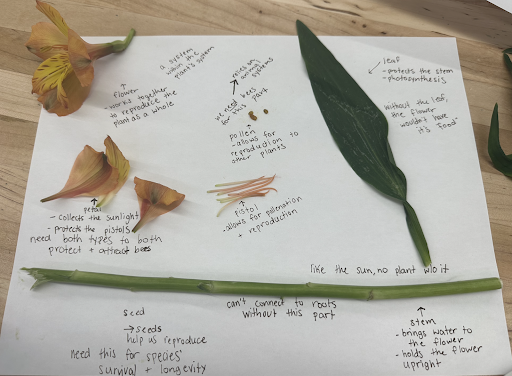
Pictured above: My initial flower take-apart from WISSIT 2022.
This interactive course sparked a question—how could I apply this in my 6th-grade math classroom? Specifically, how could this approach help students with a topic they often struggled with – interpreting graphs?
In elementary math, interpreting graphs is often rushed or overlooked at the end of a long year of learning. I knew that my students were struggling to read and analyze graphs. So, I decided to bring the take-apart concept into our work with graphs. Instead of completing this as a one-day lesson, I wanted to make it an in-depth exploration. To start, I asked my students a simple but broad question:
“What challenges is our community facing?”
Students generated dozens of ideas—everything from littering, to racism, sickness, war, and even computer hacking. We then sorted these ideas into categories and rated them based on their relevance and potential to drive our learning forward. The issue that stood out to my students most was gun violence.
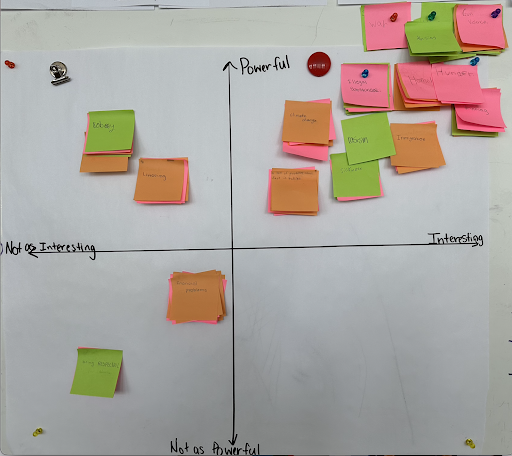
Pictured above: My students’ question sort. Gun violence was chosen as the most interesting and powerful topic.
With my students’ focus set on gun violence, I gathered graphs related to gun violence statistics in our local DMV community. Students were given the choice between 5-6 graphs, each representing different data about gun violence in the area. Armed with scissors, they first dissected the graphs by cutting the important pieces apart. They had full control over how to cut the graphs and chose which parts were important to separate and analyze. Next, they re-assembled their graphs in ways that added new meaning for them. Finally, using the Parts, Purposes, and Complexities routine, students labeled and explained the components of each graph, connecting the data to real-world implications about gun violence. It was fascinating to see how students interpreted the same graph in unique ways, deepening their understanding not only of graphs, but also of the impact that gun violence has on our community.

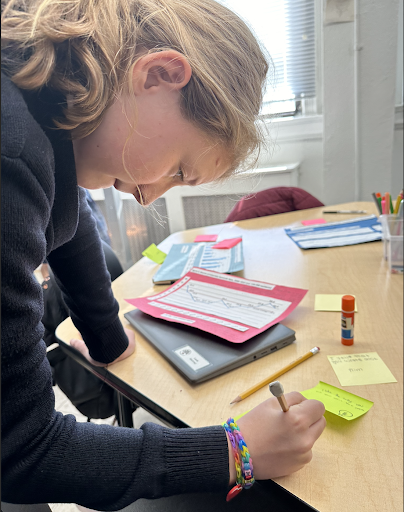
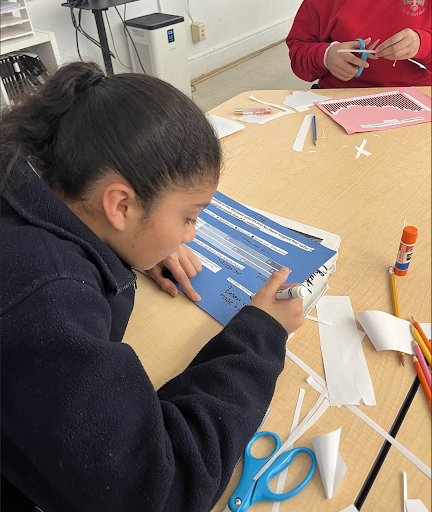
Pictured above: Students taking apart and reconstructing their graphs. They also write notes about what they value and wonder about their peers’ work.
I noticed during this process that my students struggled with identifying certain parts of the graph, like the source. This led to deeper questions like, “What is the source of this graph?” and “Which sources can we trust?”. These inquiries shifted our focus from just understanding gun violence data to learning how to critically analyze the information presented in graphs. Students were no longer passive consumers of data; they became active investigators, exploring the idea that every graph tells a story, and it’s our job as mathematicians to interpret and create stories we value.
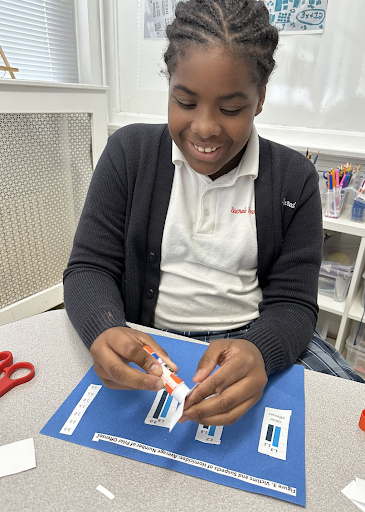
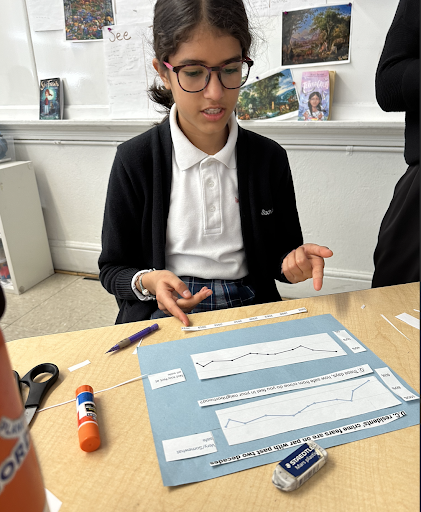
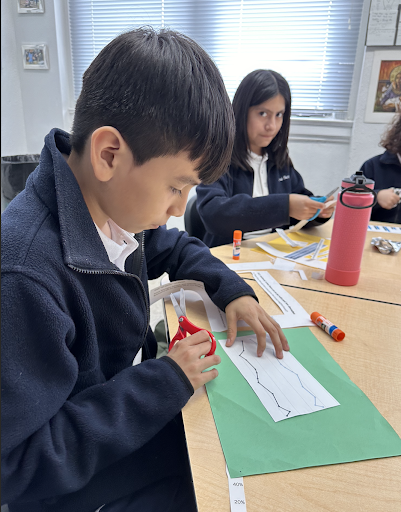
Pictured above: More students taking apart and reconstructing their graphs.
What started as a math lesson evolved into something far more impactful. This graph take-apart activity inspired my students to dive deeper into the issue of gun violence in our community. They were so passionate about the topic that they set a goal: to write and publish an article in a local newspaper about the impact of gun violence and provide resources for those affected.
In our three-month exploration, students surveyed their families about experiences with gun violence, analyzed the data, researched gun violence prevention organizations like Sandy Hook Promise, and ultimately wrote an article for publication. Simultaneously, they learned about gun regulations in the US and other countries in their Global Studies class, and reviewed how to write informational texts in their Language Arts class.
At the end of the year, we hosted an exhibition of learning where student focus groups presented each presented a different component of the exploration. Parents, teachers, and even other students from our school came to see the powerful work that had come from this single activity. It was truly inspiring to see how a take-apart could grow into something so meaningful.
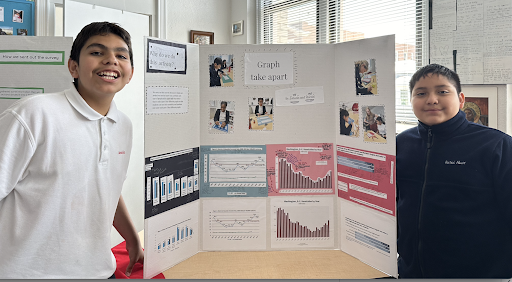
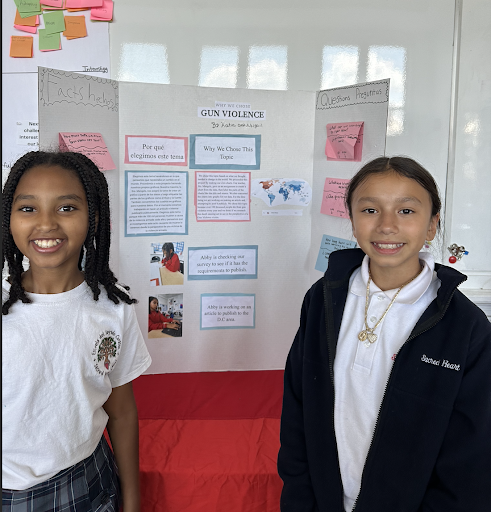
Pictured above: Students sharing their work at our exhibition of learning.
As a teacher who typically plans each lesson in detail, this experience challenged me to step back and let my students lead. What began as a small idea—taking apart graphs—blossomed into a full-scale investigation that empowered students to take action on an issue they care about. And that, I believe, is the power of teaching. Sometimes, all it takes is planting a small seed and helping it grow into something extraordinary.


